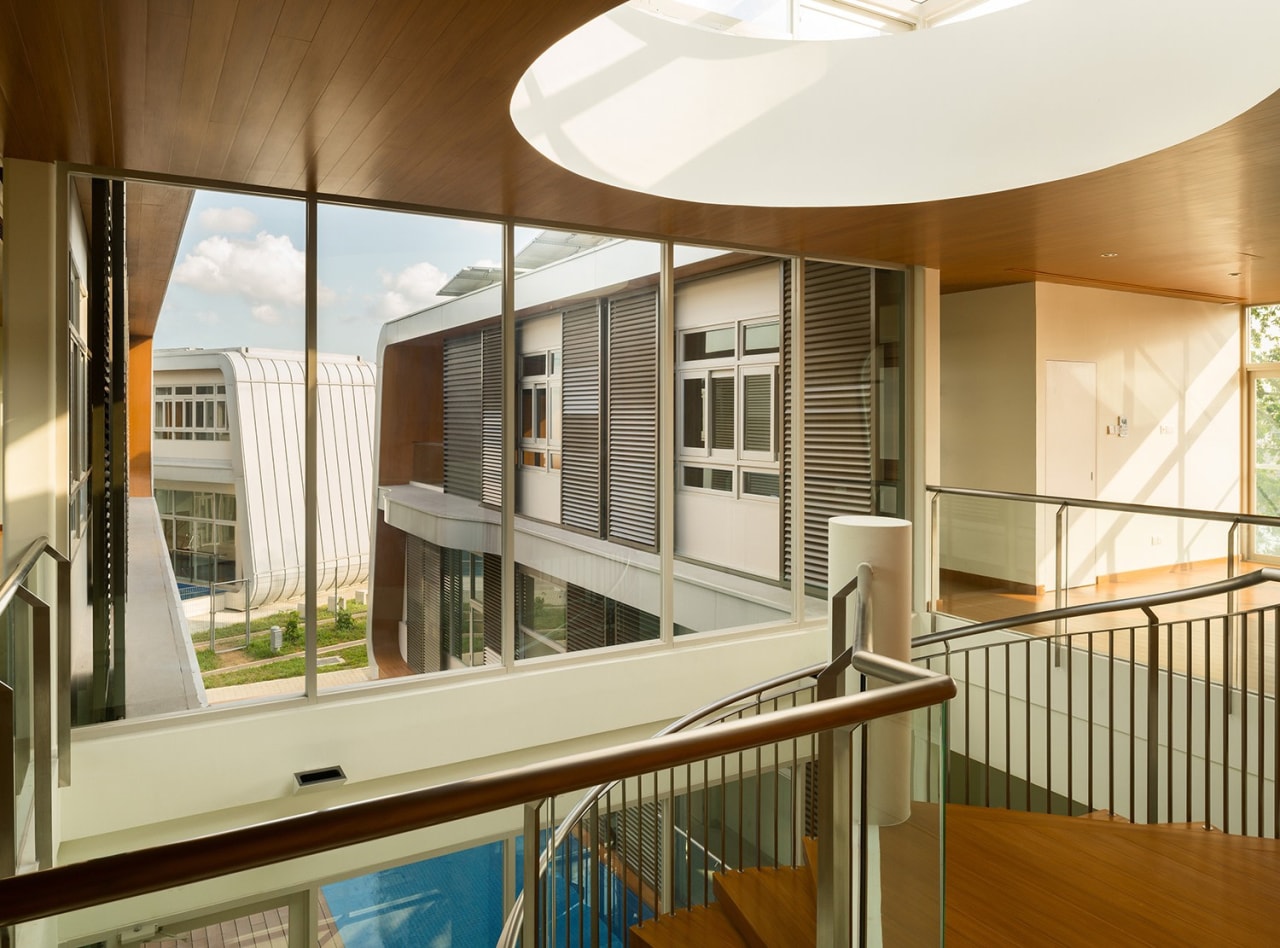The B House
Pioneering operational carbon-negative home generates more green power than it consumes
Pomeroy Studio, the
award-winning Singapore-based sustainable design firm, has announced the
completion of their pioneering operational carbon-negative home: the B House,
in Singapore.
The home, which is highly
water, energy and waste efficient, offsets the energy requirements of its
occupants through the use of solar energy, and provides surplus energy that
could in the future be fed back into the grid.
The B House employs many
of the passive design techniques used in Singapore’s colonial Black and White
bungalows; and when coupled with modern technology, results in one of the most
sustainable detached modern homes in the region at the same price point as the
neighbouring residential developments.
“The owner of the B House
was keen to push the boundaries of sustainable design for a private commission
of two family bungalows in Bukit Timah, Singapore” said Founding Principal
Prof. Jason Pomeroy, continuing, “the home sought to ensure that the occupants
would never have energy bills again, and greatly reduced water bills. The
challenge therefore was to create a zero carbon house at the same cost of a
bungalow comparable in scale. What started as a carbon zero project would
eventually become a pioneering operational carbon negative house in Singapore”
The house is orientated
and shaped to minimise heat from the East and West sun – reducing solar heat
gain and maximising cross ventilation through the prevailing wind. Airflow is
further facilitated through strategically placed window openings and high
ceilings. North and South façades comprise of low, medium and high-level
windows and shutters that act like a series of valves in a similar fashion to
its historical predecessor.
These can be opened and
closed in multiple configurations to regulate airflow, prevent rain, and
provide shade whilst filtering light during the hottest or wettest seasons.
Daylight penetration is further optimised through shallow floor plates that
permit all habitable rooms to receive 100% natural light.
Verandahs line both wings
of the house, channeling cooler air into the interiors, and the central
Courtyard is strategically placed between the more public formal reception area
and private areas. This ensures that natural light and ventilation percolate
into the interior spaces, and also acts as an outdoor social space.
The design of the house
is modular, allowing pre- fabricated modules to be manufactured off-site,
improving quality and reducing wasteful off-cuts. This pre-fabricated
‘kit-of-parts’ also increased the speed and efficiency of construction by 50%
as compared to a similar sized residential building. Furthermore, materials
with low eco-toxicity and high recyclable content were used throughout, and
water-harvesting equipment with a water saving system forecasted to save up to
465m³ of
water per year. The household energy consumption for a typical family of five
in a ‘normal’ home is estimated at 12,500 kWh per year, while a family of five
in the passively designed B House is estimated to consume approximately 8,000
kWh per year. The 100m² of polycrystalline photovoltaic solar panels on the roof are
expected to generate 16,720 kWh per year, meaning that the B House effectively
acts as power station that provides surplus energy that could be supplied back
into the grid for income generation.
The B House has been
awarded the Building Construction Authority’s (BCA) Green Mark Platinum
Award, the highest award for environment-friendly buildings in Singapore.
Story by: Keelan McCafferty
Home kitchen bathroom commercial design
Personality plus
Diving into nature
Classic looks, contemporary efficiency











